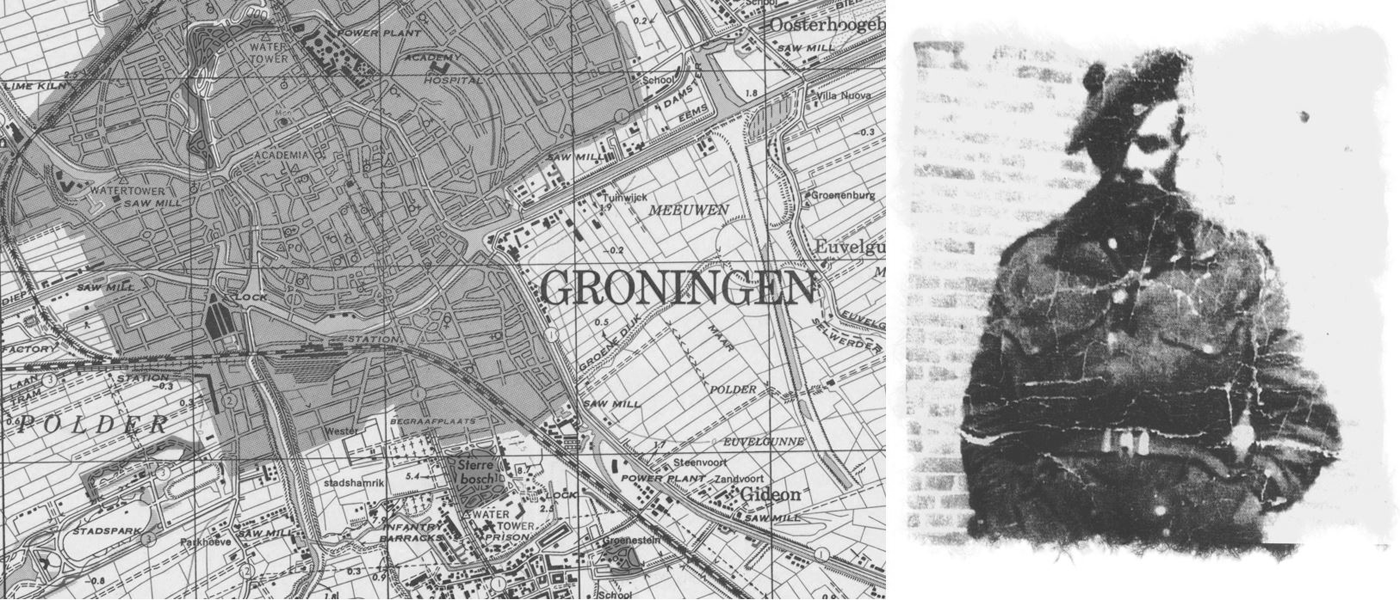Russell "Sandy" Sanderson and the Battle of Groningen
"Sandy was a Sniper-Scout in a Scout Platoon of the 1st Battalion, The Black Watch, Royal Highland Regiment of Canada. A photo of Sandy, taken in Holland in February of 1945, can be seen in the banner at the top of all of McMaster's WWII Topographic Map Series webpages. It appears there with his gracious consent. Sandy's major duty was reconnaissance. For this, he relied heavily on maps like those in our Holland 1:25,000 scale series. It was my distinct pleasure to have met and talked with Sandy about his experiences and the use of these maps in the field."--Gord Beck, Map Specialist, Lloyd Reeds Map Collection
View the map of Groningen...
where it is confirmed that Sandy captured between 20 and 25 German soldiers single-handedly when sent on a scouting mission in advance of the Black Watch main force.
View Sandy's entire story, featured in the History Channel's documentary, "Black Watch Snipers" (2016)
References
The text for this webpage was excerpted from the following resources:
Ashworth, G. J., The City as Battlefield. The Liberation of Groningen, April 1945. Groningen: 1995.
Dykstra, Ralph. "The Liberation of Groningen--An Urban Battlefield." The Army Doctrine and Training Bulletin. vol.5, no.3, Fall 2002, pp. 46-52.
The Occupation of the Netherlands--Veterans Affairs Canada
Groningen--canadiansoldiers.com
The Battle of Groningen--battlefieldtours.nu
Battle of Groningen--wikipedia.com
Groningen--The Calgary Highlanders

